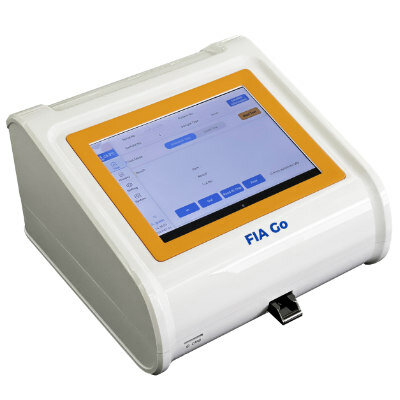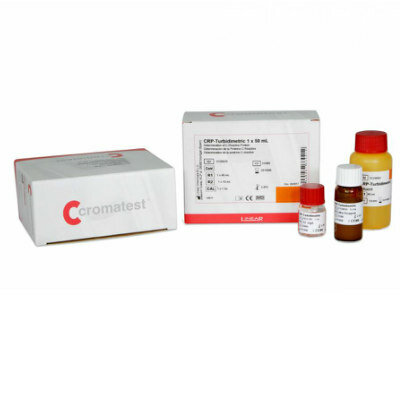Blood Products Use in Trauma-Related Hemorrhagic Shock Patients Questioned
|
By LabMedica International staff writers Posted on 05 Apr 2022 |

Treatment of hemorrhagic shock is now increasingly focused on the early use of hemorrhage control, tranexamic acid, and blood-based resuscitation with packed red cells and plasma. The improved survival from these and other strategies within streamlined trauma systems have been reported in the military and civilian settings, and have stimulated an interest in prehospital transfusion.
Extending the use of both packed red blood cells (PRBC) and plasma for major hemorrhage into the prehospital environment might seem intuitive, but has implications for the transfusion and clinical communities. Transfusion specific concerns include sustaining the demand for universal blood products, blood product wastage, and regulatory compliance.
Clinical scientists at the Queen Elizabeth Hospital (Birmingham, UK) and their colleagues carried out a randomized controlled trial of resuscitation with pre-hospital blood products (RePHILL) is a multicenter, allocation concealed, open-label, parallel group, randomized, controlled, phase 3 trial done in four civilian prehospital critical care services in the UK.
Eligible participants were randomly assigned to receive either up to two units each of packed red blood cells (PRBC) and LyoPlas or up to 1 L of 0.9% sodium chloride administered through the intravenous or intraosseous route. Sealed treatment packs which were identical in external appearance, containing PRBC–LyoPlas or 0.9% sodium chloride were prepared by blood banks and issued to participating sites according to a randomization schedule. From Nov 29, 2016 to Jan 2, 2021, prehospital critical care teams randomly assigned 432 participants to PRBC–LyoPlas (n=209) or to 0.9% sodium chloride (n=223).
The scientists reported that the median follow-up was 9 days (IQR 1 to 34) for participants in the PRBC–LyoPlas group and 7 days (0 to 31) for people in the 0.9% sodium chloride group. Participants were mostly white (62%) and male (82%), had a median age of 38 years (IQR 26 to 58), and were mostly involved in a road traffic collision (62%) with severe injuries (median injury severity score 36, IQR 25 to 50). Before randomization, participants had received on average 430 mL crystalloid fluids and tranexamic acid (90%). Upon arrival to the hospital, the mean hemoglobin concentration was higher in the PRBC–LyoPlas group than in the 0.9% sodium chloride group (133 g/L versus 118 g/L).
The composite primary outcome occurred in 128 (64%) of 199 participants randomly assigned to PRBC–LyoPlas and 136 (65%) of 210 randomly assigned to 0.9% sodium chloride (adjusted risk difference –0.025%). The rates of transfusion-related complications in the first 24 hours after ED arrival were similar across treatment groups (PRBC–LyoPlas 11 [7%] of 148 compared with 0.9% sodium chloride nine [7%] of 137, adjusted relative risk 1.05. Serious adverse events included acute respiratory distress syndrome in nine (6%) of 142 patients in the PRBC–LyoPlas group and three (2%) of 130 in 0.9% sodium chloride group, and two other unexpected serious adverse events, one in the PRBC-LyoPlas (cerebral infarct) and one in the 0.9% sodium chloride group (abnormal liver function test). There were no treatment-related deaths.
The authors concluded that the trial did not demonstrate that PRBC–Lyoplas improved episode mortality or lactate clearance when compared with 0·9% sodium chloride for participants with trauma-related hemorrhagic shock. Based on current evidence, the decision to commit to routine prehospital transfusion in civilian practice will require careful consideration by all stakeholders. The study was published on April 1, 2022 in the journal The Lancet Hematology.
Related Links:
Queen Elizabeth Hospital
Latest Hematology News
- Next Generation Instrument Screens for Hemoglobin Disorders in Newborns
- First 4-in-1 Nucleic Acid Test for Arbovirus Screening to Reduce Risk of Transfusion-Transmitted Infections
- POC Finger-Prick Blood Test Determines Risk of Neutropenic Sepsis in Patients Undergoing Chemotherapy
- First Affordable and Rapid Test for Beta Thalassemia Demonstrates 99% Diagnostic Accuracy
- Handheld White Blood Cell Tracker to Enable Rapid Testing For Infections
- Smart Palm-size Optofluidic Hematology Analyzer Enables POCT of Patients’ Blood Cells
- Automated Hematology Platform Offers High Throughput Analytical Performance
- New Tool Analyzes Blood Platelets Faster, Easily and Accurately
- First Rapid-Result Hematology Analyzer Reports Measures of Infection and Severity at POC
- Bleeding Risk Diagnostic Test to Reduce Preventable Complications in Hospitals
- True POC Hematology Analyzer with Direct Capillary Sampling Enhances Ease-of-Use and Testing Throughput
- Point of Care CBC Analyzer with Direct Capillary Sampling Enhances Ease-of-Use and Testing Throughput
- Blood Test Could Predict Outcomes in Emergency Department and Hospital Admissions
- Novel Technology Diagnoses Immunothrombosis Using Breath Gas Analysis
- Advanced Hematology System Allows Labs to Process Up To 119 Complete Blood Count Results per Hour
- Unique AI-Based Approach Automates Clinical Analysis of Blood Data
Channels
Clinical Chemistry
view channel
3D Printed Point-Of-Care Mass Spectrometer Outperforms State-Of-The-Art Models
Mass spectrometry is a precise technique for identifying the chemical components of a sample and has significant potential for monitoring chronic illness health states, such as measuring hormone levels... Read more.jpg)
POC Biomedical Test Spins Water Droplet Using Sound Waves for Cancer Detection
Exosomes, tiny cellular bioparticles carrying a specific set of proteins, lipids, and genetic materials, play a crucial role in cell communication and hold promise for non-invasive diagnostics.... Read more
Highly Reliable Cell-Based Assay Enables Accurate Diagnosis of Endocrine Diseases
The conventional methods for measuring free cortisol, the body's stress hormone, from blood or saliva are quite demanding and require sample processing. The most common method, therefore, involves collecting... Read moreMolecular Diagnostics
view channel
Unique Autoantibody Signature to Help Diagnose Multiple Sclerosis Years before Symptom Onset
Autoimmune diseases such as multiple sclerosis (MS) are thought to occur partly due to unusual immune responses to common infections. Early MS symptoms, including dizziness, spasms, and fatigue, often... Read more
Blood Test Could Detect HPV-Associated Cancers 10 Years before Clinical Diagnosis
Human papilloma virus (HPV) is known to cause various cancers, including those of the genitals, anus, mouth, throat, and cervix. HPV-associated oropharyngeal cancer (HPV+OPSCC) is the most common HPV-associated... Read moreImmunology
view channel
Diagnostic Blood Test for Cellular Rejection after Organ Transplant Could Replace Surgical Biopsies
Transplanted organs constantly face the risk of being rejected by the recipient's immune system which differentiates self from non-self using T cells and B cells. T cells are commonly associated with acute... Read more
AI Tool Precisely Matches Cancer Drugs to Patients Using Information from Each Tumor Cell
Current strategies for matching cancer patients with specific treatments often depend on bulk sequencing of tumor DNA and RNA, which provides an average profile from all cells within a tumor sample.... Read more
Genetic Testing Combined With Personalized Drug Screening On Tumor Samples to Revolutionize Cancer Treatment
Cancer treatment typically adheres to a standard of care—established, statistically validated regimens that are effective for the majority of patients. However, the disease’s inherent variability means... Read moreMicrobiology
view channel
Mouth Bacteria Test Could Predict Colon Cancer Progression
Colon cancer, a relatively common but challenging disease to diagnose, requires confirmation through a colonoscopy or surgery. Recently, there has been a worrying increase in colon cancer rates among younger... Read more.jpg)
Unique Metabolic Signature Could Enable Sepsis Diagnosis within One Hour of Blood Collection
Sepsis is a life-threatening condition triggered by an extreme response of the body to an infection. It requires immediate medical intervention to prevent potential death or lasting damage.... Read morePathology
view channel
Spatial Tissue Analysis Identifies Patterns Associated With Ovarian Cancer Relapse
High-grade serous ovarian carcinoma is the most lethal type of ovarian cancer, and it poses significant detection challenges. Typically, patients initially respond to surgery and chemotherapy, but the... Read more.jpg)
Unique Hand-Warming Technology Supports High-Quality Fingertip Blood Sample Collection
Warming the hand is an effective way to facilitate blood collection from a fingertip, yet off-the-shelf solutions often do not fulfill laboratory requirements. Now, a unique hand-warming technology has... Read moreTechnology
view channel
New Diagnostic System Achieves PCR Testing Accuracy
While PCR tests are the gold standard of accuracy for virology testing, they come with limitations such as complexity, the need for skilled lab operators, and longer result times. They also require complex... Read more
DNA Biosensor Enables Early Diagnosis of Cervical Cancer
Molybdenum disulfide (MoS2), recognized for its potential to form two-dimensional nanosheets like graphene, is a material that's increasingly catching the eye of the scientific community.... Read more
Self-Heating Microfluidic Devices Can Detect Diseases in Tiny Blood or Fluid Samples
Microfluidics, which are miniature devices that control the flow of liquids and facilitate chemical reactions, play a key role in disease detection from small samples of blood or other fluids.... Read more
Breakthrough in Diagnostic Technology Could Make On-The-Spot Testing Widely Accessible
Home testing gained significant importance during the COVID-19 pandemic, yet the availability of rapid tests is limited, and most of them can only drive one liquid across the strip, leading to continued... Read moreIndustry
view channel
ECCMID Congress Name Changes to ESCMID Global
Over the last few years, the European Society of Clinical Microbiology and Infectious Diseases (ESCMID, Basel, Switzerland) has evolved remarkably. The society is now stronger and broader than ever before... Read more
Bosch and Randox Partner to Make Strategic Investment in Vivalytic Analysis Platform
Given the presence of so many diseases, determining whether a patient is presenting the symptoms of a simple cold, the flu, or something as severe as life-threatening meningitis is usually only possible... Read more
Siemens to Close Fast Track Diagnostics Business
Siemens Healthineers (Erlangen, Germany) has announced its intention to close its Fast Track Diagnostics unit, a small collection of polymerase chain reaction (PCR) testing products that is part of the... Read more

















